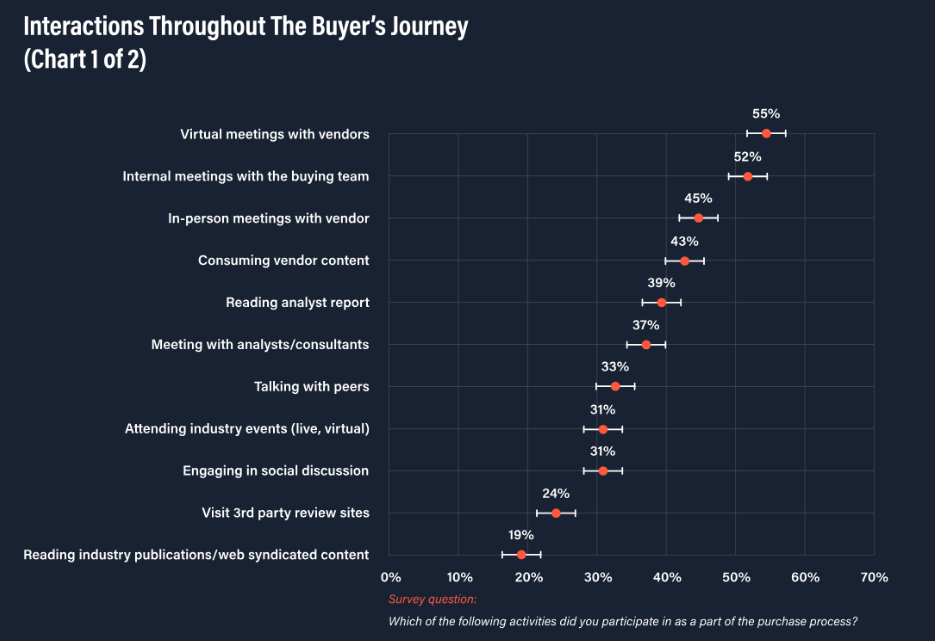Advancements in technology and organizational methods have changed the way B2B sales and marketing teams engage with potential customers. Innovations like account-based marketing, buyer intent signals, and AI provide exceptional insights into buyer behavior. However, these tools still cannot fully penetrate the intricacies of the B2B buying experience. The latter involves buying teams making often risky purchasing decisions. They are also cautious of being aggressively targeted by vendors which leads them to conduct most of the buying independently. 6sense explains these complexities in its latest B2B Buyer Experience Report.

According to the research, buyers are typically 70% through their buying process before they directly engage sellers. When engagement occurs, it’s usually initiated with the vendor that ultimately secures the business 84% of the time. Buyers’ requirements are largely established at this initial contact point, suggesting that vendors have a slim chance (16%) of winning the deal if they haven’t made a strong impression in the early stages of the buying process.
There are also surprising insights about the duration of buying cycles. Contrary to expectations, more significant purchases, deemed important to organizations, were associated with cycles shorter than the average of 11 months (from the start of research until vendor selection). This suggests that critical business solutions may be prioritized or streamlined by purchasing organizations. Additionally, larger buying organizations reported shorter buying cycles, possibly due to more mature purchasing processes and specialized personnel.
Another key finding was the impact of the size of the buying team on the length of the buying cycle. The number of vendors being evaluated strongly influences the team’s size, with each additional vendor above the average of four extending the buying process by two months. More vendors also increase the number of interactions per team member and the overall number of buyer-seller interactions.
The research emphasizes the importance for sellers to engage with buyers early in their journey, well before they have completed 70% of the buying process. Early engagement is crucial not only to influence buyers but also to eliminate competitors, simplifying and shortening the buying process. Effective engagement strategies include thought leadership content, expert consultations, practitioner communities, and educational events.

The study also examined buyer activities during the purchase process. It found that virtual meetings with vendors were the most common interaction (55%), slightly more prevalent than in-person meetings (45%), though the latter were deemed more helpful. Other significant activities included consuming vendor content (43%), reading analyst reports (39%), consulting analysts/consultants (37%), discussing with peers (33%), and attending industry events (31%).
When interacting with the winning vendor, about 41% of buyers engaged in website chats, while nearly 40% responded to sales emails or calls. Other actions included filling out forms to access vendor content, registering for online events, clicking on ads, and noticing but not clicking on vendor ads.










